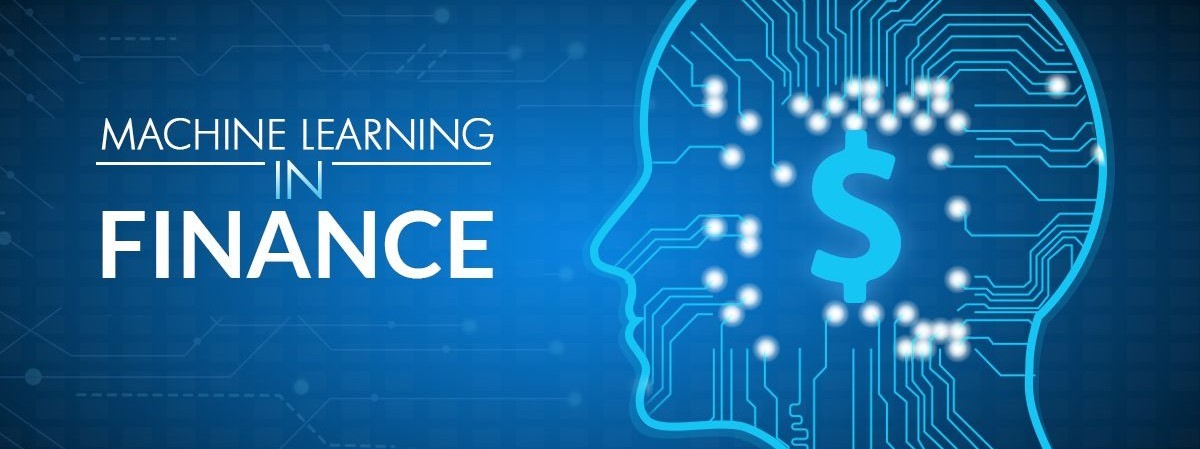MACHINE LEARNING IN FINANCE
Machine learning is transforming the financial industry by giving alternatives for credit reports, accelerating the evaluation process, automating tasks, and enhancing the chances of loan applicants to obtain the required loans.
Machine learning (ML) is causing a significant change in the financial industry by altering the way risk evaluations and decisions regarding trading are made. It had a substantial effect on data operations and management. This article offers valuable insights into the application of machine learning in the banking industry and the potential for career growth in this dynamic and continuously changing subject.
Applications of Machine Learning in Finance
Machine learning is making substantial progress in 10 significant applications in the field of financial markets.
- Algorithmic trading is a technique that uses machine learning algorithms to detect trends and carry out trades quickly and precisely.
- High-Frequency Trading (HFT) is a trading strategy that utilizes machine learning to detect trading prospects and address it rapidly, facilitating instantaneous decision-making.
- Market Sentiment Analysis uses machine learning approaches to assess the overall sentiment of the market and make well-informed investing choices.
- Utilizing machine learning algorithms in portfolio management entails examining market information and enhancing asset allocation techniques for portfolio management.
- Machine learning algorithms are employed for analyzing and controlling risks by analyzing past information and forecasting upcoming market swings.
- ML methods are employed for fraud detection, particularly in identifying actions such as money laundering, insider trading, and illegal access.
- Credit Scoring employs Machine Learning techniques to evaluate an individual’s ability to repay a loan and determine their credit ratings.
- Client Relationship Management improves client interaction and tailors offerings to individual preferences.
- Predictive Analytics utilizes statistical models to anticipate future stock prices, economic conditions, and investment results.
- Trade Settlement Automation optimizes trade negotiation procedures, minimizes mistakes, and enhances operational effectiveness.
- Machine learning in finance improves client interactions by utilizing chatbots, real-time suggestions, and automated recruitment and onboarding procedures. This boosts the efficiency and effectiveness of on-demand assistance.
The financial services industry has experienced significant advantages from the use of machine learning (ML) technology, primarily due to its capacity to bring about profound changes. Machine learning techniques assist in the analysis, prediction modeling, and optimization of operations. They are capable of identifying fraudulent activities, devising methods for handling risks, automating trading procedures, and allowing tax optimization. This integration improves the effectiveness of operations and promotes the ability to make informed decisions.
Advantages
Machine learning provides a multitude of advantages in the banking industry. An important benefit is its capacity to handle and examine large quantities of unprocessed data, like market, customer, and transactional data, in order to produce useful insights that can improve managing risks, investment choices, and client service. Furthermore, machine learning has the capability to automate diverse financial procedures such as identifying fraudulent activities and optimizing tax processes, thus minimizing the likelihood of scams and errors while simultaneously preserving time.
Machine learning in finance offers a notable advantage in enhancing decision-making by analyzing past data and detecting trends to produce accurate forecasts. Machine learning techniques are particularly advantageous in trading as they can create trading strategies and carry out deals autonomously. Moreover, machine learning has the capability to augment client service by utilizing robo-advisers that offer tailored investment guidance, hence enhancing consumer contentment and alleviating the burden on financial advisors.
To summaries, machine learning in finance offers a wide range of advantages, including improved decision-making, automated operations, improved client service, and the identification of new prospects. Companies that use this technology are more likely to thrive in the changing environment of the financial sector, and we may expect more advancements in machine-learning usage in the future.
Disadvantages
Machine learning (ML) has several benefits in the banking industry, including enhanced efficiency and precision in decision-making procedures. Nevertheless, there are some disadvantages that must be taken into account. An important issue to consider is the possibility of bias in machine learning algorithms, as they depend on previous data that may be biased, resulting in biased predictions or choices. This bias can result in tangible consequences, such as unfair loan approval determinations made on the basis of past gender bias.
The lack of transparency is a significant concern when it comes to using machine learning in finance. The intricate nature of machine learning algorithms poses difficulties for specialists in comprehending and rectifying errors or biases. Moreover, the absence of human supervision in automated financial procedures might lead to inaccuracies or erroneous judgements, particularly in unanticipated circumstances that are not accounted for in the algorithm’s training information.
There is a potential danger of cyber-attacks aimed at machine learning algorithms in the finance sector, where hackers may try to manipulate or fool the algorithms in order to get sensitive financial information or impair the functioning of financial markets. Moreover, the expenses associated with the implementation and upkeep of machine learning technology in the finance sector might pose a significant barrier for smaller enterprises, hence constraining their capacity to rival larger corporations that possess the financial means to engage in such technology.
To address the issues, financial institutions should reduce the risks linked to machine learning by tackling bias, improving transparency, assuring human supervision, and adopting cybersecurity safeguards. By adopting this approach, individuals may leverage the advantages of machine learning while mitigating possible limitations and complexities.
Conclusion
Machine learning is transforming the way financial institutions operate, including tasks such as detecting fraud and optimizing portfolios. By utilizing extensive datasets and intricate algorithms, this system generates significant insights that empower clients to make well-informed decisions, ultimately leading to improved financial outcomes. Nevertheless, it is vital to contemplate possible disadvantages and employ prudence and moral integrity. By employing the appropriate methodology, it has the potential to optimize operational processes, elevate consumer satisfaction, and stimulate advancements within the sector.
